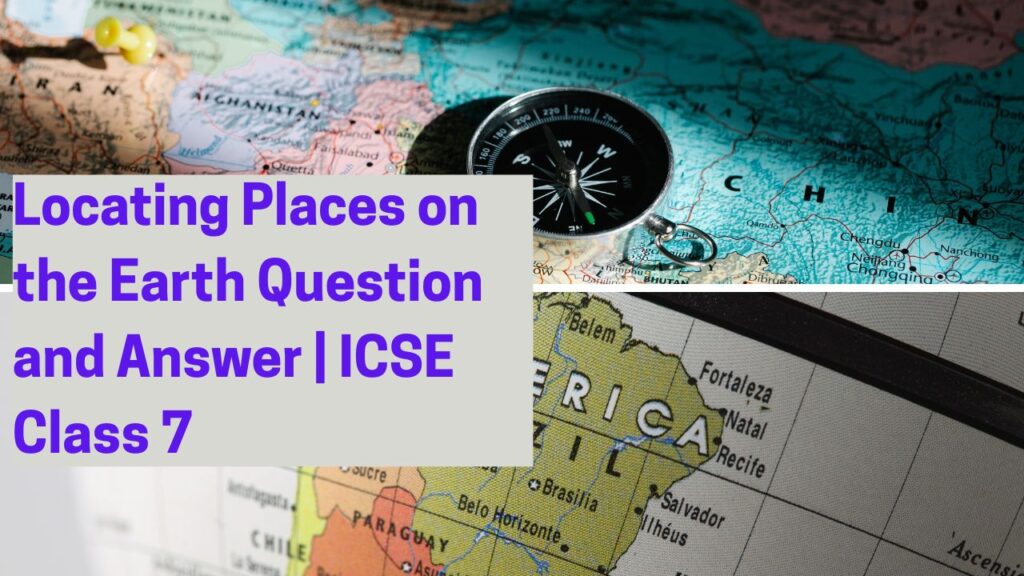This page presents important North America Location and Physical Features ICSE Class 7 Questions and answers to support exam preparation. The chapter covers North America’s geographical location, major landforms, rivers, mountain ranges, and surrounding oceans. These solved Q&As simplify core concepts and help ICSE Class 7 students strengthen their understanding of the continent’s physical geography.
A. Tick the correct answers:
- Which of the following countries is not in North America?
Seychelles - Which of the following mountain ranges is not located in the Western Cordillera?
Blue Ridge - What does the word Prairie mean?
Grassland - Which of the following rivers drain into the Pacific Ocean?
Fraser, Rio Grande - Which of the following lakes is not among the Great Lakes?
Athabasca
B. Fill in the blanks:
- The Isthmus of Panama joins North America with South America.
- The capital of Cuba is Havana.
- In between Lake Erie and Lake Ontario lies the Niagara Falls.
- The Appalachian Highlands are located on the eastern side of North America.
- Lake Chapala is located in Mexico.
C. Give reasons for the following:
- The rivers that originate in the Canadian Shield flow into the Hudson Bay:
The Canadian Shield has a general slope towards the Hudson Bay. Since rivers follow the natural gradient of the land, most rivers originating in this region flow northward into the Hudson Bay. - The Appalachian Highlands are also called the Eastern Highlands:
The Appalachian Highlands are located on the eastern side of North America, extending from Canada to the United States. Their location gives them the name “Eastern Highlands.” - The Prairies are known as the “Granary of the World”:
The Prairies have fertile soil and a favorable climate, making them ideal for growing wheat and other grains on a large scale. This has earned them the title “Granary of the World.” - The Western Cordillera is prone to earthquakes and volcanic activity:
The Western Cordillera is part of the Pacific Ring of Fire, a tectonically active region with frequent earthquakes and volcanic eruptions due to the movement of the Pacific and North American plates. - The Great Lakes are important for trade and transportation:
The Great Lakes provide a major inland waterway for trade and transportation, connecting cities in the United States and Canada. They are also linked to the Atlantic Ocean via the St. Lawrence River.
D. Answer the following questions:
- What is the latitudinal and longitudinal extent of North America?
Ans: North America lies entirely in the Northern Hemisphere. It extends roughly between 7°N and 83°N latitude. It also lies entirely in the Western Hemisphere, extending between 53°W and 180°W longitude. - Name the European nations that established settlements in North America. In what parts of the continent did they settle?
Ans:- The French settled in the St. Lawrence River Valley.
- The Dutch established trading settlements along the Hudson River.
- The British settled around Chesapeake Bay and other areas between the Appalachians and the Atlantic Ocean.
- The Spanish settled around the Gulf of Mexico.
- In 1776, 13 British colonies along the Atlantic Seaboard won their independence and formed the United States of America.
- Write about the location and extent of the Western Cordillera. Name four intermontane plateaus located here.
Ans:- The Western Cordillera is an extensive mountain system located in the western part of North America.
- These young fold mountains run from Alaska in the north to Panama in the south.
- The Cordillera consists of roughly three parallel ranges, extending 6,500 km in length and 650 km to 1,600 km in width.
- The height of these mountain ranges varies between 2,500 m and 4,000 m above sea level.
- Intermontane Plateaus:
- Alaska Plateau
- Columbia Plateau
- Great Basin
- Colorado Plateau
- Mention the three physical characteristics of the Canadian Shield. Name five minerals found in this shield.
Ans:
Characteristics of the Canadian Shield:
a. The Canadian Shield is centered around Hudson Bay and covers the northern and northeastern parts of North America.
b. It contains some of the oldest and hardest rocks in North America, with an average elevation of 600 meters above sea level.
c. The general slope of the Shield is towards Hudson Bay, and it has many rounded hills, lakes, and swamps.
Five Minerals Found in the Canadian Shield:- Gold
- Silver
- Uranium
- Nickel
- Copper
- Where is the Prairie located? What type of landform is found here?
Ans:- The Prairies lie in the Central Lowlands, located between the Appalachian Mountains in the east and the Rocky Mountains in the west.
- The southern extent of the Prairie is about 4,800 km, while the east-west width is about 2,000 km.
- Landforms of the Prairie:
- The eastern part is flat.
- The western part rises to about 500 meters.
- The northern part slopes towards the Arctic Ocean, while the southern part slopes towards the Gulf of Mexico and the Atlantic Ocean.
- Name two rivers each that flow into the Arctic Ocean, Atlantic Ocean, and the Gulf of Mexico.
Ans:- Arctic Ocean: Mackenzie, Nelson
- Atlantic Ocean: St. Lawrence, Hudson
- Gulf of Mexico: Mississippi, Missouri


